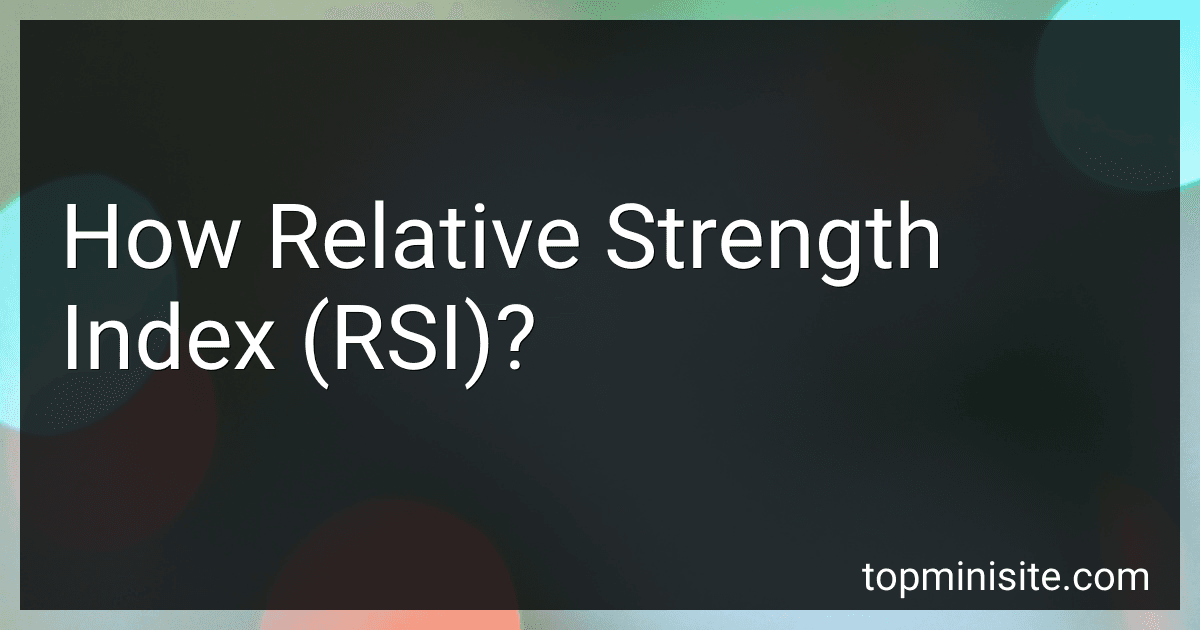Best RSI Trading Tools to Buy in December 2025
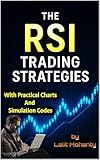
The RSI Trading Strategies: With Practical Charts and Simulation Codes (Advanced Trading Strategies Series Book 1)



Day Trading with Relative Strength Index (RSI): Mastering Short-Term Profits Through Momentum and Market Signals; Advanced Techniques for Consistent Gains. (Day Trading with Different Indicators)


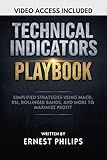
Technical Indicators Playbook: Simplified Strategies Using MACD, RSI, Bollinger Bands, and More to Maximize Profit (Forex Technical Trading Series: Scalping, ... and Advanced Market Analysis Strategies)


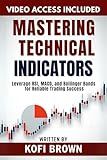
Mastering Technical Indicators: Leverage RSI, MACD, and Bollinger Bands for Reliable Trading Success (Forex Trading Secrets Series: Frameworks, Tools, and Tactics for Every Market Condition)


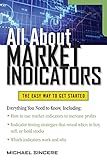
All About Market Indicators (All About Series)


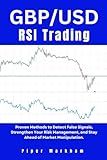
GBP/USD RSI Trading: Proven Methods to Detect False Signals, Strengthen Your Risk Management, and Stay Ahead of Market Manipulation. (Mastering Forex with Proven Indicators)


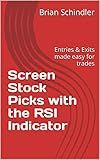
Screen Stock Picks with the RSI Indicator: Entries & Exits made easy for trades


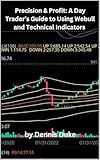
Precision & Profit: A Day Trader’s Guide to Using Webull and Technical Indicators : Master RSI, VWAP, Fibonacci & MACD for Top Gainers and Risk Control


The Relative Strength Index (RSI) is a technical analysis tool that is commonly used to measure the momentum and strength of a security or an asset. It was developed by J. Welles Wilder Jr. in 1978. RSI is considered a leading indicator as it provides a signal before the price action occurs.
The RSI is calculated using a mathematical formula that compares the average gain over a specified time period to the average loss over the same period. The most commonly used time period is typically 14 days, but traders can adjust this value based on their preferences or trading strategies.
The RSI ranges from 0 to 100. A reading above 70 is generally considered overbought, suggesting that the asset may be due for a price correction or reversal. Conversely, a reading below 30 is considered oversold, indicating the asset may be poised for a potential price increase.
Traders use the RSI in various ways. The two most common methods are identifying overbought and oversold conditions and utilizing bullish or bearish divergences. Overbought conditions may prompt traders to sell, while oversold conditions may signal a buying opportunity.
When the RSI diverges from the price action, it can provide valuable information about potential reversals. A bullish divergence occurs when the price forms a lower low while the RSI forms a higher low - this suggests a potential upward price movement. Conversely, a bearish divergence occurs when the price forms a higher high, but the RSI forms a lower high - indicating a potential downward price movement.
While the RSI is a widely used tool, it is essential to remember that it is not infallible and can generate false signals. Traders often employ the RSI in conjunction with other technical indicators and tools to validate signals and make more informed trading decisions.
Overall, the RSI is a popular and versatile technical indicator that helps traders gauge the strength and direction of a security, allowing them to identify potential entry or exit points in the market.
What is the role of RSI in mean reversion trading strategies?
RSI, or the Relative Strength Index, is a technical indicator commonly used in mean reversion trading strategies. Mean reversion strategies aim to capitalize on the fact that asset prices tend to revert to their mean or average price over time, after deviating from it. RSI helps identify overbought or oversold conditions in the market, indicating potential reversals in price.
In mean reversion trading, RSI is used as a signal to identify when an asset is overbought or oversold. When the RSI value is above a certain threshold, typically 70, it suggests that the asset is overbought and may experience a price decline. Conversely, when the RSI is below another threshold, usually 30, it indicates that the asset is oversold and may rebound in price.
Traders using mean reversion strategies can enter short positions when the RSI is above 70, expecting the price to decline back towards the mean. Similarly, they can enter long positions when the RSI is below 30, anticipating a price increase. RSI helps traders identify potential entry or exit points for their mean reversion trades based on the overbought or oversold conditions it indicates.
It's important to note that RSI is just one of many indicators used in mean reversion strategies. Traders often combine it with other technical tools and analysis to confirm signals and make informed trading decisions.
How can RSI be used to identify potential trade setups based on historical price patterns?
Relative Strength Index (RSI) is a popular momentum indicator that traders use to identify overbought and oversold conditions in the market. While RSI itself does not explicitly identify historical price patterns, it can be combined with other technical analysis tools to spot potential trade setups based on patterns. Here's how you can use RSI in conjunction with historical price patterns:
- Identify traditional chart patterns: Look for well-known chart patterns such as double tops, double bottoms, head and shoulders, triangles, flags, etc., that have proven to be reliable indicators of trend reversals or continuation. These patterns can be detected visually on price charts.
- Analyze RSI within the pattern: Once you identify a specific pattern, examine the RSI indicator during the same period. Look for divergences or confirmations within the pattern. A divergence occurs when the price makes a higher high or lower low, but the RSI makes a lower high or higher low, indicating a potential reversal. Confirmations are observed when the price and RSI move in the same direction, affirming the pattern trend.
- Assess RSI levels: Also, consider RSI levels during the pattern formation. If the RSI indicates overbought conditions (above 70), it could suggest a potential reversal from a double top or head and shoulders pattern. Conversely, if the RSI indicates oversold conditions (below 30), it could signal a possible rebound from a double bottom or inverse head and shoulders pattern.
- Combine with trendlines or support/resistance levels: RSI can be more effective when combined with trendlines or support/resistance levels. Draw trendlines connecting highs or lows within the pattern. If the RSI breaks a trendline or a support/resistance level simultaneously with a pattern breakout, it adds further confirmation to the trade setup.
- Consider timeframes: Lastly, remember to analyze the historical price patterns and RSI on different timeframes to gain a comprehensive view. Patterns and RSI divergences found on higher timeframes provide stronger trade setups compared to those on lower timeframes.
It's important to note that no single indicator or pattern guarantees successful trades. Always use RSI and historical price patterns as a part of a well-rounded analysis that incorporates multiple indicators and risk management techniques. It's recommended to practice and backtest any strategy before implementing it in your live trading regimen.
How can RSI be used to identify entry and exit points in a trade?
RSI (Relative Strength Index) is a momentum oscillator that measures the speed and change of price movements. It can be used to identify potential entry and exit points in a trade using the following methods:
- Overbought and Oversold Levels: RSI values above 70 indicate an overbought condition, suggesting that the price may reverse or experience a pullback. Traders may consider selling or exiting a trade when RSI reaches or crosses this level. Conversely, RSI values below 30 indicate an oversold condition, suggesting the price may rebound or reverse upwards. Traders may consider buying or entering a trade when RSI reaches or crosses this level.
- Bullish and Bearish Divergence: RSI can help identify divergence between the indicator and the price action. Bullish divergence occurs when the price makes a lower low, but RSI forms a higher low. This suggests a potential reversal or upward movement, indicating a buying opportunity. Conversely, bearish divergence occurs when the price makes a higher high, but RSI forms a lower high. This suggests a potential reversal or downward movement, indicating a selling opportunity.
- RSI Trendline Breakout: By drawing trendlines along the highs and lows of RSI, traders can watch for a breakout. If RSI breaks above a descending trendline, it can signal a possible upward price movement, indicating a buying opportunity. If RSI breaks below an ascending trendline, it can indicate a possible downward price movement, suggesting a selling opportunity.
- RSI Centerline Crossover: RSI crossing above or below the 50 level can be used to generate entry and exit signals. When RSI crosses above 50, it suggests a bullish signal, indicating a potential entry point. Conversely, when RSI crosses below 50, it suggests a bearish signal, indicating a potential exit point.
However, it's important to note that RSI, like any technical indicator, should not be used in isolation. It is beneficial to combine it with other technical analysis tools and consider other factors such as support and resistance levels, trend analysis, and fundamental analysis for better trade decisions.
How can RSI help identify potential trend reversals?
RSI (Relative Strength Index) can help identify potential trend reversals through the following aspects:
- Overbought and Oversold Levels: RSI measures the strength and momentum of a trend. When the RSI reaches extreme levels above 70, it indicates that the market is overbought and may be due for a reversal. Conversely, when the RSI drops below 30, it suggests the market is oversold and could reverse its downtrend.
- Divergence: RSI can also detect divergences, which occur when the price and the indicator move in opposite directions. Bullish divergence happens when the price forms lower lows, while the RSI forms higher lows. This suggests a potential trend reversal to the upside. Conversely, bearish divergence occurs when the price forms higher highs, while the RSI forms lower highs, indicating a potential trend reversal to the downside.
- Trendline Breaks: Drawing trendlines on the RSI chart can help identify potential trend reversals. If the RSI breaks its bullish trendline, it could indicate an impending trend reversal to the downside. On the other hand, if the RSI breaks its bearish trendline, it may signal a potential trend reversal to the upside.
- Failure Swings: Failure swings occur when the RSI reaches overbought or oversold levels, pulls back, and then fails to reach the same high or low as before. A bearish failure swing occurs when the RSI fails to exceed its previous high in the overbought region, indicating a potential trend reversal to the downside. Similarly, a bullish failure swing occurs when the RSI fails to reach its previous low in the oversold region, suggesting a potential trend reversal to the upside.
It's important to note that RSI alone should not be the sole factor to base trading decisions on. It should be used in conjunction with other technical indicators and analysis methods for a more comprehensive understanding of potential trend reversals.
How can RSI be used in conjunction with other technical indicators?
RSI (Relative Strength Index) is a popular technical indicator used to measure the strength and momentum of a price movement. It can be combined with other technical indicators to enhance trading decisions. Here are a few ways RSI can be used in conjunction with other indicators:
Confirmation of trend: RSI can be used to confirm or validate the strength of a trend identified by other indicators like moving averages. For example, if the RSI is in an overbought or oversold condition while the moving average is also indicating a trend reversal, it can be a stronger signal.
Divergence: RSI divergence occurs when the price movement does not align with RSI movement. It can indicate a potential reversal or change in direction. In such cases, other indicators like MACD (Moving Average Convergence Divergence) or Stochastic Oscillator can be utilized to confirm the divergence and provide additional insights.
Overbought/Oversold levels: RSI values above 70 are generally considered overbought, while values below 30 are considered oversold. When RSI reaches extreme levels, other indicators like Bollinger Bands or pivot points can be used to identify potential reversal points or areas of support and resistance.
Cross-referencing with other indicators: Traders often use multiple indicators to increase their confidence in a trade. RSI can be used in conjunction with other indicators like Moving Average, MACD, or Fibonacci retracement levels to provide multiple signals that align with different technical analysis methods.
Backtesting: RSI can be used in combination with historical price data to backtest trading strategies. By analyzing the performance of RSI along with other indicators in different market conditions, traders can validate the effectiveness of their trading strategy.
It's important to note that the selection and combination of indicators depend on individual preferences, trading style, and market conditions. Traders should experiment and practice with different combinations to find what works best for them.
